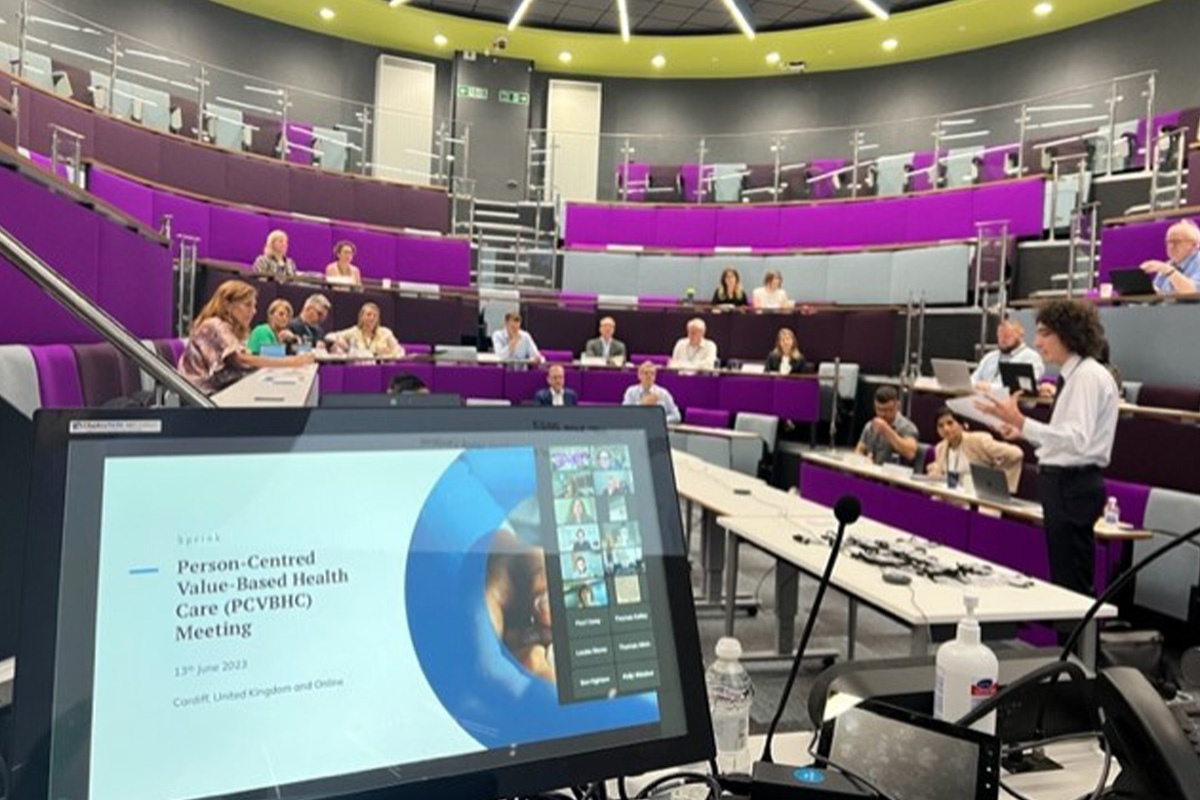PCVBHC is built on the foundation that innovative drugs, medical interventions, care decisions, and resource allocation should all lead to outcomes that truly matter to individuals.
To achieve value, we must understand people’s goals and preferences, and we must then use that understanding to support decision-making at all levels: the micro level of interactions between people and their healthcare professionals, the meso level of service design and delivery and the macro level of resource allocation and policy development.
On the 13th and 14th of June 2023, the first PCVBHC Meeting brought together the perspectives of leading experts on Person-Centred Health Care, Value-Based Health Care and Healthy Equity.
One of the expert panels was facilitated by Professor Sally Lewis, Director of the Welsh Value in Health Centre, which focused on how to implement goal and preference setting in practice.
Professor Alf Collins, Clinical Director for Personalised Care, NHS England
“Value is about understanding and working towards what matters to individuals – both their goals and their care preferences.”

For Alf, delivering high-value health care is about having the right conversations with patients, understanding their goals and their preferences. Decisions should be mutually constructed between the patient and their health care professional by exchanging relevant information from both sides and by an informed deliberation to reach final decisions. This can be thought of according to a modified version of Glyn Elwyn’s ‘Three talk model’.
- Team talk: establish a collaborative relationship with the patient and support deliberation.
- Goal talk: discuss the patient’s goals and better understand their preferences (e.g. “Have you had a chance to think about what you’d like to achieve as a result of managing your…?”).
- Option talk: explain the options available and compare the benefits, risks, harms and uncertainties.
- Decision talk: bring together the goals and options discussed, formulate an informed decision and act on what matters to the individual.
Professor Christobel Saunders, University of Melbourne and Royal Melbourne Hospital
“We must train clinicians in how to elicit goals/preferences.”

Christobel’s perspective highlighted the key practical challenges of eliciting patients’ goals and preferences and ways of overcoming these.
| Challenges | Potential Solutions |
| Clinicians not taking into account the goals and preferences of patients. | Education and resources to equip clinicians with the tools and skills needed. |
| Patients struggle to understand their options and navigate their care pathways. | Clear, tailored communications and navigation tools. |
| Clinicians rely on generic PROMs without taking into account patients concerns. | Complement PROMs with additional information to build a broader picture of the patient’s health, goals and preferences. |
| The goals and preferences of the patient change over time. | Make the goals and preferences of patients an ongoing conversation. |
| Patients do not have enough information about clinicians’ outcomes and costs to decide what is best for them. | Measure and publish outcomes and costs at clinician and unit levels. |
Dr Magdalena Walbaum, Senior Project Manager, Sprink
“There is an opportunity to incorporate patient goals and preferences as primary and secondary endpoints in clinical trials.”

Finally, Magdalena discussed the importance of incorporating goals and preferences into clinical trials. She proposed incorporating patients’ goals and preferences as primary or secondary outcomes to measure the effectiveness of technologies and medicines being developed. Implementing a patients-as-partners model has the potential to enhance the impact on the clinical and cost-effectiveness of medicines and interventions.[1]
In particular, capturing goals and preferences during clinical trials can improve the quality of the evidence on new treatment options by:
- Reaching patient-relevant outcomes.
- Facilitating patient recruitment.
- Improving study participants’ retention.
- Capturing follow-up data over more extended periods.
- Improving the interpretation of results.
Find out more about PCVBHC in the PCVBHC report, which sets out its vision, framework, and implementation recommendations.
If you are interested in any of our focus areas, please contact Dr Thomas Kelley, CEO of Sprink (t.kelley@sprink.co.uk).
References
1 Harrington RL, Hanna ML, Oehrlein EM, Camp R, Wheeler R, Cooblall C, et al. Defining Patient Engagement in Research: Results of a Systematic Review and Analysis: Report of the ISPOR Patient-Centered Special Interest Group. Value in Health. 2020;23(6):677-88.



